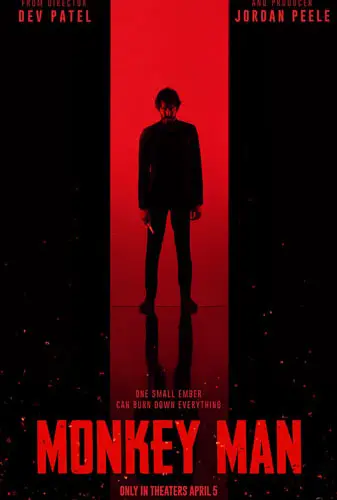
There’s a reason we use the roller coaster analogy with action films. Roller coasters have moments of thriller, met by moments of calm swinging back and forth. Monkey Man has one big moment of thrills in the first but acts nothing in the second that blows us away, like in the third. It get it. I’m being fairly simplistic in my criticism, but that’s how it felt with this anticipation of something great and waiting a long time for it.
This last criticism will get me canceled: I couldn’t understand half the dialogue—the heavily accented English dialogue. Most of the time, I’m lost, wondering what vital information I’m missing. For example, the villain, Chief. It took me forever to realize that this was about the Police Chief. Subtitles would be great for the English.
Let’s end on a good. I loved that Monkey Manhat. It looked like a live-action comic book (take notes, Marvel). The framing and composition of each shot felt like they were storyboarded like a comic book, with spectacular establishing shots followed by vibrant up-close action.

“…Patel went out of his way to look like an action star—a somewhat lanky action star.”
Dev Patel went out of his way to look like an action star—a somewhat lanky action star. Thankfully, he chose not to get all roided out but built a physique that matched his long, thin body type. He designed the action sequences based on his body and fighting style.
I also liked that this is essentially an Indian film with American sensibilities. I’ve seen my fair share of Indian action films, and as fun as they are, Monkey Man felt very familiar, as Ito is my preferred storytelling. In the end, it balanced beautifully for both Indian and Western audiences.
For his rookie debut, Dev Patel ultimately produced a fun action film with pacing issues—in my humble opinion. Monkey Man’s Indian influence makes this story of class and caste fascinating to behold.

"…Indian film with American sensibilities."



Pacing issues????? This review is f*****g insane. Watch it again. It’s non stop.